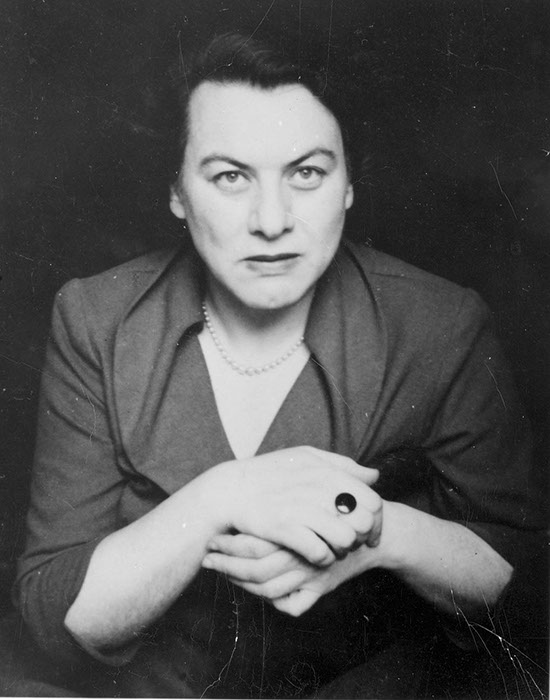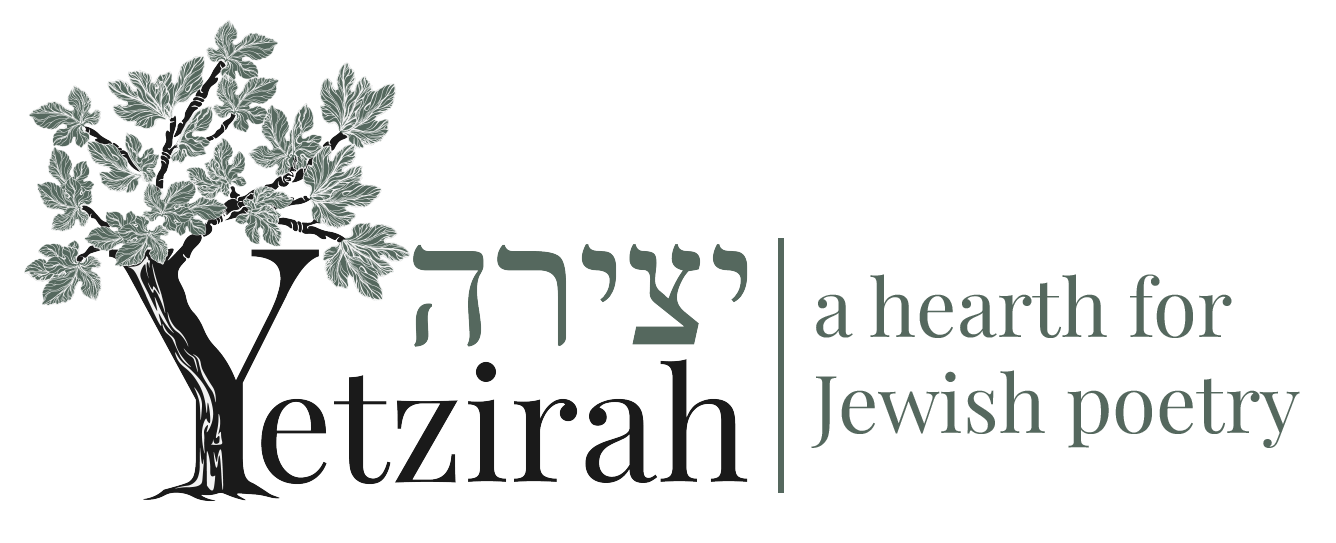
Muriel Rukeyser
Birth City, State, Country
Biography
Muriel Rukeyser was a poet, playwright, biographer, children’s book author, and political activist. Throughout her life, Rukeyser highlighted how these forms of expression could be interlocked with social justice causes. Over her five-decade literary career, Rukeyser was known as a “spokespoet,” one who was on the front line of speaking out for freedom and justice for the world. When asked about Rukeyser’s first collection, Theory of Flight (1935), W.R. Benet remarked in the Saturday Review of Literature: “She is a radical politically, but she writes as a poet not a propagandist. When you hold this book in your hand you hold a living thing.”
Born in New York City, Muriel Rukeyser attended Vassar college, where she worked as an editor for the undergraduate journal Student Review. It was as a reporter for this journal that Rukeyser covered the infamous 1932 Scottsboro trial in Alabama. This event was thought to be the basis of her poem “The Trial” and in an obituary of Rukeyser written by Wolfgang Saxon, he asserts that this event “may have been the genesis of her commitment to the cause of the underdog and the unjustly condemned.” Rukeyser travelled extensively and moved around in many different social communities throughout her life, including supporting Spanish Loyalists during the Spanish Civil War as she reported from Barcelona; as well as being arrested in Washington for protesting the Vietnam War. One of the most notable incidents of her passion for social justice came when she served as the President of the American Center for PEN, when she traveled to South Korea to rally against the death sentence of poet Kim Chi-Ha. This experience provided the framework for one of her last poems, “The Gates.”
Rukeyser was valued not just for her ability to call out injustice, but also for her surprising optimism. Roy B. Hoffman wrote that Rukeyser’s grievances with the social and political oppression she saw was “mingled with a romantic’s belief in the perfectibility of the universe, and a young patriot’s belief in the perfectibility of her nation.” Many contemporaries have compared her writing to that of Walt Whitman, in that her poems have “so much joy that it is not to be contained in regular verse but comes out in lines that are rugged and soaring.” She has been praised for her mingling of politicization with personal experience, opening the door to the adoption of slogans like “the personal is political.”
Rukeyser has been marked as an important figure in second-wave feminism, as well as shaping an entire generation of innovative poetics. Where her political poems were urgent and visceral, many of her poems were more personal and intimate, highlighting her sentiment that personal life and political life were indivisible. Her poems often focused on motherhood, daughterhood, sexuality, creativity, illness, death, and the creative process. She drew on myth and dreamwork, which Sam Huber of The Paris Review describes as Rukeyser trying to “represent the obligations and demands of a dense public world from the private vantage of intimate experience.”
Rukeyser’s poetry was various in form, as was her exploration of genre. She wrote biographies, children’s books, plays, television scripts, and even translated works of international poets. Her biographies centered on a wide variety of subjects, including the German lithographer Käthe Kollwitz, American composer Charles Ives, mythological figures like Orpheus, to profiles of New England eccentric Lord Timothy Dexter, 19th-century mathematician Willard Gibbs, English mathematician and scientist Thomas Hariot, and lawyer and business executive Wendell Willkie. Rukeyser chose to write about these pillars of the scientific community in an attempt to find the meeting place between science and poetry, and rejected the idea that the two were in opposition of each other. In an analysis of The Life of Poetry, Virginia Terris explained the comparisons between science and poetry that Rukeyser focused on; “Rukeyser [set] forth her theoretical acceptance of science … [and pointed] out the many parallels between [poetry and science]—unity within themselves, symbolic language, selectivity, the use of the imagination in formulating concepts and in execution. Both, she believe[d], ultimately contribute to one another.
Muriel Rukeyser was impassioned, confident, and a poet of powerful expression. Her works shaped the views of both modernist and leftist communities through her fight for freedom and equality for all. After her death in 1980, Anna Herzog wrote in The Women’s Review of Books, that Rukeyser “articulated the thoughts and feelings of the unnoticed and excluded,” and that “one of this country’s most distinguished, misunderstood and undervalued poets.” Her work remains an urgent dispatch for readers struggling to make sense of multiple, volatile political, humanitarian, and environmental crises.
(Biography courtesy of The Poetry Foundation)
Published Works
Poetry
The Essential Muriel Rukeyser; edited by Natasha D. Trethewey (HarperCollins, 2021)
The Book of the Dead; introduction by Catherine Venable Moore (West Virginia University Press, 2018)
The Collected Poems of Muriel Rukeyser; edited by Janet E. Kaufman and Anne F. Herzog (University of Pittsburgh Press, 2006)
Muriel Rukeyser: Selected Poems; edited by Adrienne Cecile Rich (Library of America, 2004)
Out of Silence: Selected Poems (Triquarterly Books, 1992)
The Collected Poems of Muriel Rukeyser (McGraw, 1978)
The Gates: Poems (McGraw, 1976)
Breaking Open: New Poems (Random House, 1973)
Twenty-nine Poems (Rapp & Whiting, 1972)
Mazes; with photography by Milton Charles (Simon & Schuster, 1970)
The Speed of Darkness (Random, 1968)
The Outer Banks (Unicorn Press, 1967)
The Orgy (Coward, 1965)
Waterlily Fire: Poems 1935-1962 (Macmillan, 1962)
Body of Waking (Harper, 1958)
Selected Poems (New Directions, 1951)
Elegies (New Directions, 1949)
Orpheus; with the drawing “Orpheus,” by Picasso (Centaur Press, 1949)
The Life of Poetry (Current Books, 1949)
The Green Wave (Doubleday, 1948)
The Children’s Orchard (Book Club of California, 1947)
Beast in View (Doubleday, 1944)
Wake Island (Doubleday, 1942)
The Soul and Body of John Brown (Privately printed, 1940)
A Turning Wind: Poems (Viking, 1939)
U.S. One (Friede, 1938)
Mediterranean (Writers and Artists Committee, 1938)
Theory of Flight; foreword by Stephen Vincent Benet (Yale University Press, 1935)
Biography
Willard Gibbs: American Genius (Doubleday, 1942)
One Life (Simon & Schuster, 1957)
The Traces of Thomas Hariot (Random House, 1971)
Children’s Books
Come Back, Paul (Harper, 1955)
I Go Out; with Leonard Kessler (Harper, 1962)
Bubbles; illustrated by Jeri Quinn (Harcourt, 1967)
More Night; illustrated by Symeon Shimin (Harper, 1981)
Drama
The Middle of the Air (1945)
The Colors of the Day (produced in Poughkeepsie, NY, 1961)
All The Way Home (Dynamic Films, 1957)
Houdini (Paris Press, 2002)
Translations
Selected Poems of Octavio Paz (Indiana University Press, 1963)
Sun Stone (New Directions, 1963)
Selected Poems of Gunnar Ekeloef; with Leif Sjoeberg (Twayne, 1967)
Three Poems (T. Williams, 1967)
A Molna Elegy: Metamorphoses; with Leif Sjoeberg (Unicorn Press, 1984)
Other
The Poetry and Voice of Muriel Rukeyser; recording (Caedmon, 1977)
Author Site
Links to Sample Works
Education
Vassar College
Columbia University
